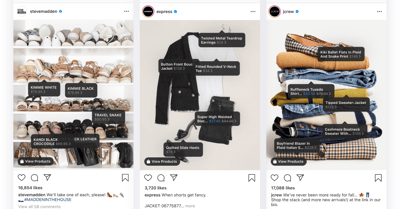I recently read Steve Dennis’ “Remarkable Retail: How To Win & Keep Customers In the Age of Digital Disruption” and feel that it is a must-read for retail executives across the globe. As the CEO of a technology start-up on the cusp of retail innovation that entered the industry to unify commerce and transform the customer experience, I’m always engaging in conversations about the future of retail. Steve Dennis’ book serves as an excellent guide for executives that know the status-quo won’t do but are hesitant to become truly customer-centric.
In this blog, I summarize the four main points from the book that I believe are going to separate the winners from the losers in the retail industry over the upcoming years. These points also happen to be some of the core motivations behind HotWax Commerce, and why I believe our technology is uniquely positioned to meet the challenges of modern retail.
Why The Retail Apocalypse Isn’t Happening
“From recent headlines, you might assume that sales in brick-and-mortar stores must be falling off a cliff.
You’d be wrong.”
The phrase “retail apocalypse” has dominated retail news in the past years, and with every former industry leader (Macy’s, Century 21, etc.) that shuts its doors, the prophecy appears to come true. Yet, despite the hysteria, many overwhelmingly brick-and-mortar retailers are not headed for oblivion, but rather strong growth, if they take advantage of their physical locations in a quest to become truly customer-centric.
Steve Dennis correctly points out in his book that eCommerce still represents only 11% of total retail sales in the United States, and that brick-and-mortar sales continue to be positive. Many retailers have invested in eCommerce as a completely distinct sales channel and all but abandoning their stores, expecting physical sales to slowly fade into irrelevance. This is a fundamentally flawed approach and one that may actually drive your business into extinction. Instead, retailers that view their brick-and-mortar locations as valuable assets are able to leverage the benefits of stores that online-only retailers can’t match in order to enhance the customer experience.
Dennis spends considerable time discussing why brick-and-mortars continue to add meaningful customer value to the overall shopping experience. Research has shown, time and time again, the degree to which eCommerce traffic impacts physical sales and vice versa. Indeed, a 2018 ICSC study showed that the presence of a physical store tends to increase a retail brand’s online sales in that trade area. Customers no longer think in terms of channels. They tend to bounce back and forth between digital and physical channels multiple times before making a purchase. Programs like BOPIS, BORIS, clienteling, and others are able to bring shopping channels together.
Eliminating Organizational Silos
“The largest obstacle to bringing a harmonized strategy to life is most often the siloed nature of many, particularly larger, retail organizations.”
All retailers love to say their organizations are structured around the customer, but few are telling the truth. In my experience, and in Dennis’, it is still extremely common to find retailers with channel-centric organizational structures, as evidenced by their siloed P&Ls, customer databases, and overall performance metrics. Many retailers invest in eCommerce as a completely distinct sales channel and business unit, which prohibits them from creating a truly unified customer experience.
In my experience, retailers aren’t taking omnichannel seriously until they re-structure to merge departments, re-define incentives to eliminate unnecessary competition, appoint omnichannel leaders, and invest in the right technology to allow for this blurring of channels.
A New Age of Personalization
“When we meet individual customer needs, wants, and desires in deeply personal ways that strongly resonate with them, we greatly increase the odds they will share that story with others.”
Personalization in retail is hardly a new concept. After all, retail in the past century was all about building personal relationships between shopkeepers and shoppers. People loved to visit their neighborhood retailer, who knew what they liked and how they liked it, and were able to make personalized recommendations based on years of knowledge. The importance of personalization hasn’t changed, it’s how we gather those insights that has changed.
Dennis writes extensively about the importance of analyzing customer behavior and leveraging this data to create a customized experience, which can include personalized product recommendations, discounts, and offers based on purchase history. In-store clienteling arms store associates with extensive customer information, as well as detailed product information and visibility into enterprise-wide inventory availability.
Innovate or Go Extinct
“Far too much of retail is still filled with tired old ideas and an abject failure to pursue innovation. Many of the retailers filing for bankruptcy or closing large numbers of stores have barely changed in over a decade.”
Dennis dedicates an entire chapter to the importance of innovation in retail. He explains at length how many executives are resistant to change, clinging on to a status quo that is comfortable despite being ineffective. This has undoubtedly been my experience over the past few years interacting with leaders at some of the largest retail organizations in the world. Even those that know they need to change refuse to do so out of fear of the unknown. The old saying goes: “no one ever got fired for buying IBM.” Retail executives continue to invest in legacy technology that is unnecessarily expensive and simply won’t achieve their desired results because it seems like the safe move. In reality, it’s just about the riskiest thing you can do.
In his final remarks, Dennis quotes Brendan Witcher, a Forrester Principal Analyst, in saying that “when it comes to the relevant retail experience, only the last three years count.” I couldn’t agree more. The retail industry is constantly changing, which is why it continues to surprise me why so many executives are hesitant to invest in up-and-coming technology developed to meet modern customer demand and expectations.
* * *
Retailers today can’t afford to do anything or to continue doing more of the same. Both Dennis and I have noticed former industry leaders essentially give up their market share to more innovative brands due to an unwillingness to meet the moment. That, in my opinion, is the real “retail apocalypse.”
If your brand is ready to innovate and achieve truly remarkable retail, to borrow Steve Dennis’ words, request a consultation with HotWax to discover our omnichannel solutions, ranging from Distributed Order Management to Mobile Commerce.








